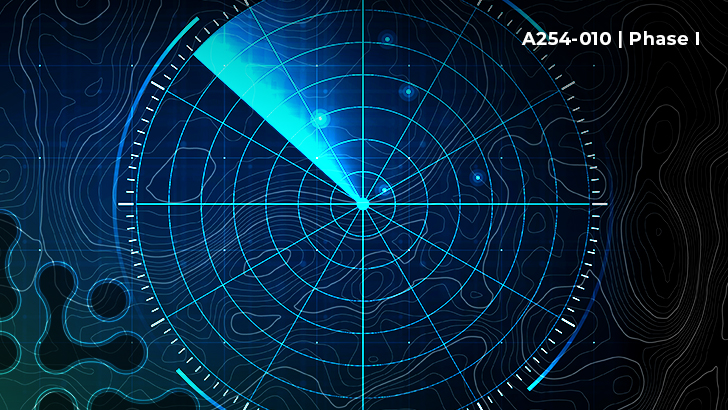

Objective
Current ground-based radar systems cannot meet the detection needs of evolving longer range threat systems without sacrificing scan times. The Army needs a solution, such as novel signal processing techniques, that can be implemented on existing radars that will provide improvements in probability of detection at longer ranges. Solutions must not impact current scan time requirements.
Description
U.S. Army, Navy, and Air Force radar systems must effectively counter emerging threats. It is desirable to update existing radar systems to detect emerging long-range threats. Particularly, counterfire target acquisition (CTA) radars must detect emerging surface-launched projectile threats at further ranges. Typical methods to improve probability of detection involve changing operational modes to increase dwell time.
However, such changes adversely affect a radar’s scan time requirements. This topic would investigate signal processing methods to improve detection probability. Additionally, any proposed method should be able to operate in complex environments (i.e., multiple targets, clutter, electronic attack). These signal processing techniques would be transitioned to programs of record to improve performance.
Phase I
This topic is only accepting Phase I proposals for a cost up to $250,000 for a 6-month period of performance. During Phase I, the expected outcome would be a feasibility study on possible signal processing techniques.
This study should include a report with analysis using laboratory simulation tools such as MATLAB, a test plan, and test results. The study and analysis should evaluate at least one technique and how it would be implemented and used in a real-world environment, with metrics showing potential improvement.
Phase II
During Phase II, it is the expectation that the techniques evaluated during phase one are matured and implemented in a more realistic simulation environment, such as a high-fidelity radar modeling tool. The algorithms should be matured to a Technology Readiness Level (TRL) of 5 or above, with the possibility of integration into a government-owned System Integration Lab (SIL). At the end of Phase II, the algorithms and techniques must be able to transition into a Science and Technology (S&T) program.
Phase III
Advanced signal processing techniques could be leveraged across any radar or sensor application such as, but not limited to, automotive, maritime, or air traffic control. More advanced signal processing would make current systems more capable and/or more efficient.
· Drone and UAV: The proliferation of commercial drones can cause havoc for U.S. public security; improved radar signal processing could help detect threats.
· Weather monitoring: MIMO radars can enhance storm tracking and precipitation detection.
· Healthcare: Radar can be used to detect vital signs remotely to aid in remote patient monitoring (RPM) which has seen a surge since COVID (24% CAGR projection).
Submission Information
For more information, and to submit your full proposal package, visit the DSIP Portal.
SBIR|STTR Help Desk: usarmy.sbirsttr@army.mil

References:
Objective
Current ground-based radar systems cannot meet the detection needs of evolving longer range threat systems without sacrificing scan times. The Army needs a solution, such as novel signal processing techniques, that can be implemented on existing radars that will provide improvements in probability of detection at longer ranges. Solutions must not impact current scan time requirements.
Description
U.S. Army, Navy, and Air Force radar systems must effectively counter emerging threats. It is desirable to update existing radar systems to detect emerging long-range threats. Particularly, counterfire target acquisition (CTA) radars must detect emerging surface-launched projectile threats at further ranges. Typical methods to improve probability of detection involve changing operational modes to increase dwell time.
However, such changes adversely affect a radar’s scan time requirements. This topic would investigate signal processing methods to improve detection probability. Additionally, any proposed method should be able to operate in complex environments (i.e., multiple targets, clutter, electronic attack). These signal processing techniques would be transitioned to programs of record to improve performance.
Phase I
This topic is only accepting Phase I proposals for a cost up to $250,000 for a 6-month period of performance. During Phase I, the expected outcome would be a feasibility study on possible signal processing techniques.
This study should include a report with analysis using laboratory simulation tools such as MATLAB, a test plan, and test results. The study and analysis should evaluate at least one technique and how it would be implemented and used in a real-world environment, with metrics showing potential improvement.
Phase II
During Phase II, it is the expectation that the techniques evaluated during phase one are matured and implemented in a more realistic simulation environment, such as a high-fidelity radar modeling tool. The algorithms should be matured to a Technology Readiness Level (TRL) of 5 or above, with the possibility of integration into a government-owned System Integration Lab (SIL). At the end of Phase II, the algorithms and techniques must be able to transition into a Science and Technology (S&T) program.
Phase III
Advanced signal processing techniques could be leveraged across any radar or sensor application such as, but not limited to, automotive, maritime, or air traffic control. More advanced signal processing would make current systems more capable and/or more efficient.
· Drone and UAV: The proliferation of commercial drones can cause havoc for U.S. public security; improved radar signal processing could help detect threats.
· Weather monitoring: MIMO radars can enhance storm tracking and precipitation detection.
· Healthcare: Radar can be used to detect vital signs remotely to aid in remote patient monitoring (RPM) which has seen a surge since COVID (24% CAGR projection).
Submission Information
For more information, and to submit your full proposal package, visit the DSIP Portal.
SBIR|STTR Help Desk: usarmy.sbirsttr@army.mil
References:
